Afraid of bee stings? Well, you’re not the only one. In fact, most people balk at the idea of taking up beekeeping because they’re scared it’s a painful job. The truth is that bee stings don’t happen as often as people think.
There are plenty of beekeepers who go on for years without being stung. We won’t lie to you, bee stings do happen, but they are rare.
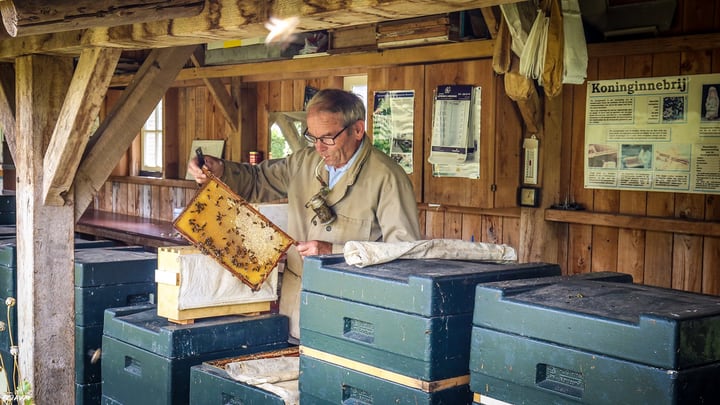
Even if you do get stung, it won’t be so dramatic if you know what to do. Read on our guide about bee stings and how to deal with them.
Bee Sting Symptoms
The first thing you need to know is that worker bees that swarm around you will only sting when they feel threatened, and in most cases, it will kill them.
Unless you meet with a suicidal bee, they will be reluctant to use their stinger on you and leave their precious venom sack behind.
It’s not the stinger, barbed as it is, that you should be afraid of but that venom sack full of toxins it comes with. The sting itself might be unpleasant, but the pain comes from those toxins.
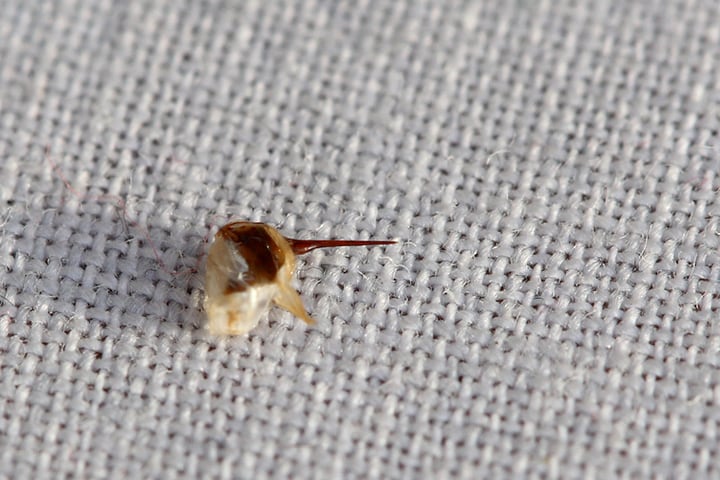
Let’s have a look at the main symptoms caused by a bee sting.
Mild Symptoms
Most people only have a mild reaction to a bee sting. It’s unpleasant, but not life threatening in any way. The most common symptoms are:
- Sharp pain at the site of the sting
- A welt around the affected spot
- Mild swelling
- Itching
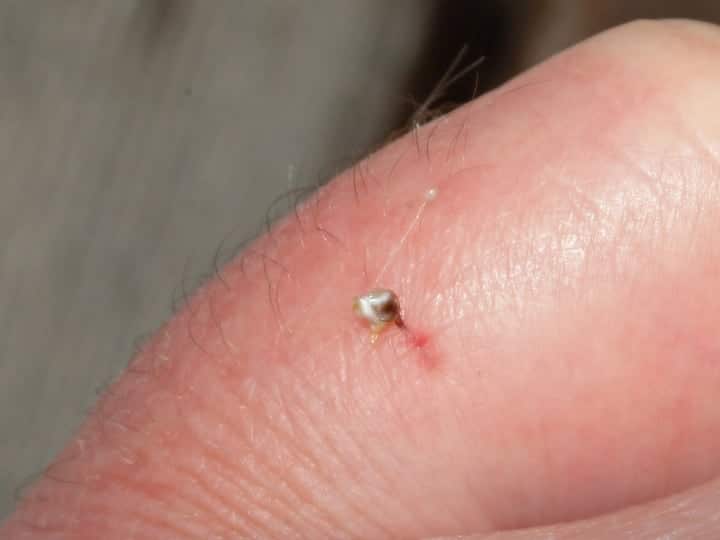
These symptoms typically go away in a few hours using only simple remedies (see below for bee sting remedies).
The good news for beekeepers is that the body can adjust easily to the pain caused by a bee sting and the next time it happens it won’t feel as bad.
Moderate Symptoms
In some cases, the body’s response to the toxins injected by the bee is stronger and, in addition to the above mentioned symptoms, you may also develop:
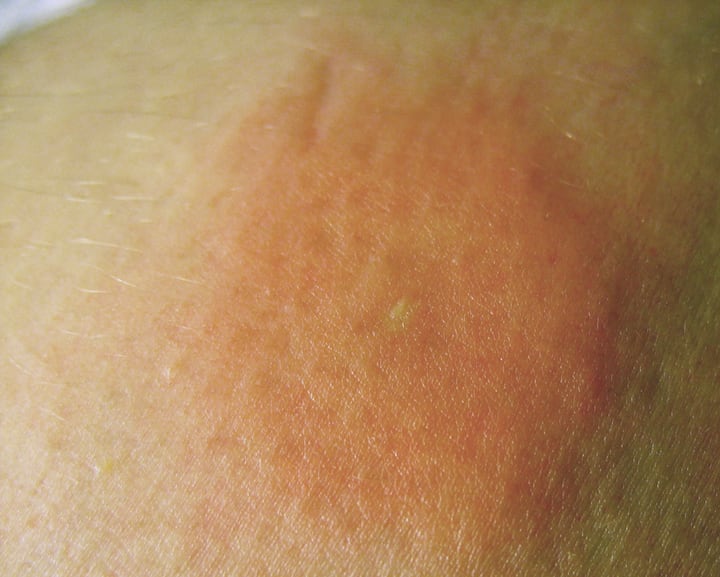
- Intense redness around the bee sting site
- Swelling over a larger area that keeps growing over the next couple of days
Now, this is more than just annoying as the whole affected area might be tender for a few days.
If by any chance you’ve been stung in on the face or neck you’ll be walking around with a rather big lump for up to five days, or even more.
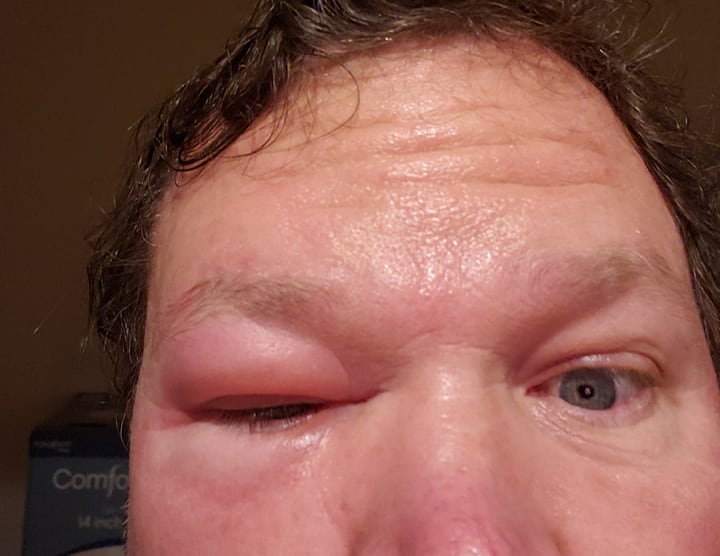
However, such symptoms resolve on their own within 5-10 days. In most cases, you won’t need to see a doctor, unless you notice that your body’s reaction to a bee sting tends to become stronger each time.
In that case, you should explore your options and maybe get treatment. The main concern here is that the next time this happens you might have a severe reaction, which can be life-threatening.
Bee Sting Reaction
People are afraid of bee stings not because of a little pain, but rather because of the horror stories they have heard about someone developing a severe allergic reaction as a result.
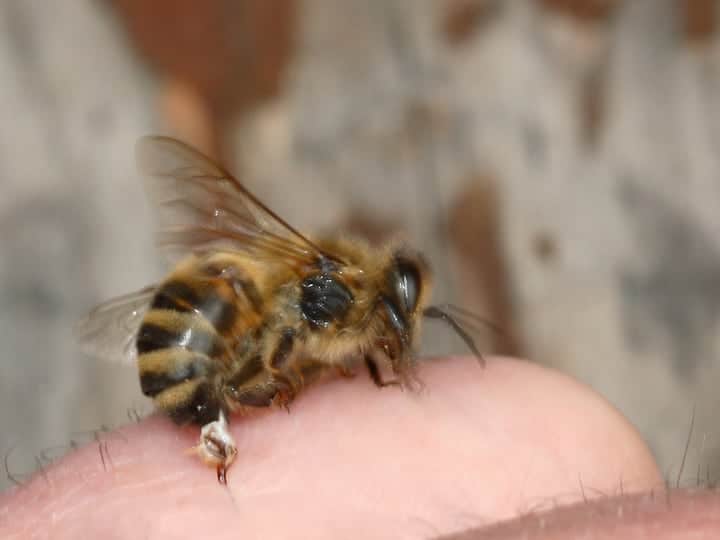
It’s natural to be afraid this might happen to you, all alone out there surrounded by bees, but the truth is few people are truly allergic to bee stings.
According to experts, around 2 million Americans are allergic to the toxins injected by stinging bugs, which is not that much when we’re talking about a population of over 330 million.
Still, you don’t want to be one of those, so here is what you need to know about allergic reactions.
Types of Bee Sting Allergic Reactions
Allergic reactions to the venom in a bee sting can be mild or severe.
Mild Allergic Reaction
A mild allergic reaction will present itself with symptoms such as:
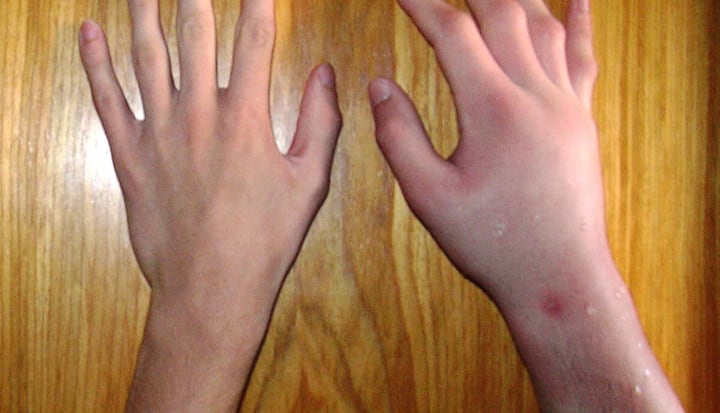
- Pain at the bee sting site
- Redness which tends to spread over a large area around the site
- Pimple-like spots
- Swelling which might be mild to moderate
- A feeling of warmth in the area surrounding the bee sting site
- Intense itching
If this is all, home remedies will probably take care of the problem and the symptoms will fade away over the next few days. Over-the-counter antihistamine medication can help you heal faster.
Severe Allergic Reaction
This type of reaction is also known as anaphylactic shock and it can be lethal so here are the symptoms you must watch out for:
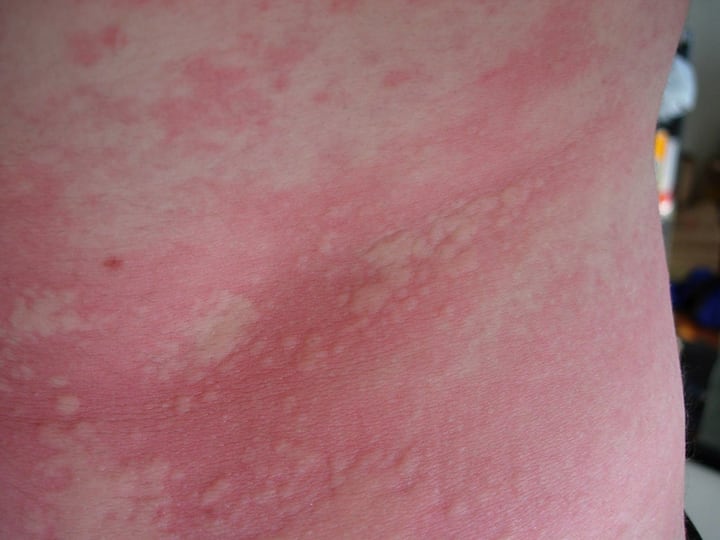
- A red, very itchy rash that spreads rapidly over the area surrounding the bee sting. Such a rash is known in medical terms as hives.
- Difficulties breathing
- Swelling of the face, throat or tongue
- Trouble swallowing or wheezing
- Feelings of restlessness or anxiety
- Rapid pulse
- Dizziness
- Sharp drop in blood pressure
If you notice any of these symptoms, especially swelling and trouble breathing you need to seek medical help immediately.
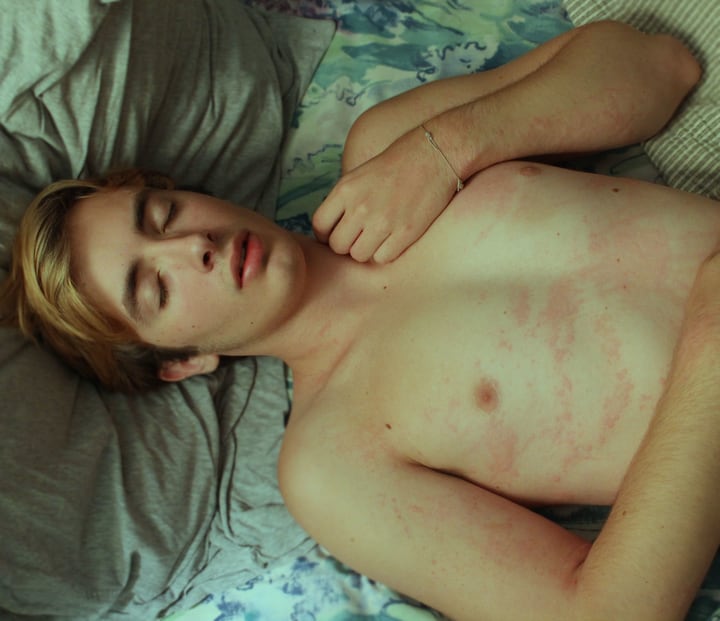
There is no time to waste waiting for the symptoms to go away. They probably won’t and if you cannot breathe you might soon lose consciousness.
Multiple Bee Stings
Most people only have to deal with the occasional bee sting while walking in the park or garden or when swatting an insect that hovers around the fruit juice in front of them.
But in certain circumstances, beekeepers might be attacked by a large number of bees, reacting furiously to someone poking around their house.
Multiple bee stings can be dangerous even for people who do not have an allergy to bee venom.

When you’re attacked by more than a dozen bees at a time, there’s an accumulation of venom that causes a toxic reaction. Here are the main symptoms of such a reaction:
- Headache
- Fever
- Nausea, vomiting or diarrhea
- Vertigo (the sensation that the whole world is spinning around you)
- Dizziness which can lead to fainting
- Convulsions
For a healthy adult, this reaction can be scary but not life-threatening.
However, for children, elderly people or people with a known heart condition or breathing problems, this is an emergency and requires prompt medical treatment.
Bee Sting Treatment: How to Treat a Bee Sting Safely
Learning how to deal with a bee sting is essential for wannabe beekeepers. In most cases, you can take care of the sting quickly and resume what you were doing.
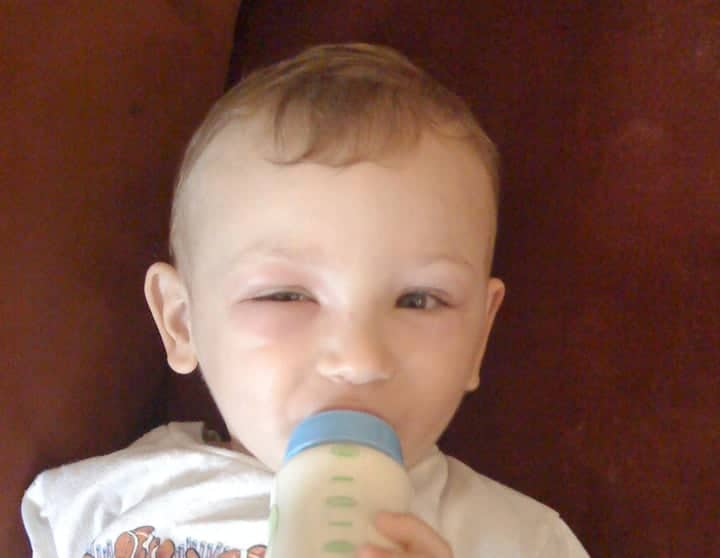
The most important thing is to keep calm. It might come as a shock, and it may certainly hurt, but it’s just a bee sting.
How to Remove a Bee Stinger
When you get stung by a bee, the first thing you need to do is get rid of the stinger. You might be aware of the fact that working bees have barbed stingers that dig into the skin.
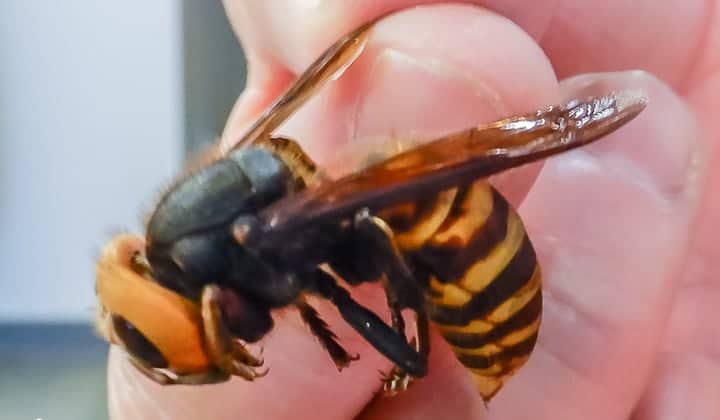
With most bees, it’s impossible to pull it out again and as they fly away from you. It tears apart from their body and rips some of their internal parts, which kills them.
For the victim, however, getting rid of the stinger is not a problem as it is very small and only penetrates the superficial part of the skin.
Don’t Pinch the Stinger
This is one of the most common mistakes people make. As they grab the stinger, they pinch the venom sack, practically releasing all the nasty toxins it contains into their body.

Instead of pinching, you need to scrape the stinger away. You can do this with a credit card quite easily or by using any tool you might have at hand. The quickest way to remove the sting is scraping it with your fingernail.
Some people are worried this might lead to breaking the stinger and leaving some part of it inside, but this is not the problem. It’s not the stinger that’s causing you pain, but the venom in the sack.
When you scrape the stinger, you also push the venom sack away from you reducing the quantity of toxins that your body is exposed to.

Tip: Experienced beekeepers recommend puffing a little smoke over the affected area.
The reason you should do this is that when a bee feels threatened and prepares to attack you it also releases pheromones to alert her sisters of the perceived threat.
By puffing smoke you mask the pheromones so the other bees won’t get triggered.

There have been cases in which one sting led to multiple stings in the same area as the other bees heard, or actually smelled, the call to action and decided to intervene.
What to Do When You Have Bee Sting Swelling
As soon as you remove the stinger you should wash the affected area with water and soap, to remove all the residual venom and prevent infection.
If you cannot immediately wash the sting site, try using disinfectant wipes to clean the area.

The next thing you need to do is treat the swelling, if any. Apply a pack of ice for at least 20 minutes. If the sting is in a sensitive area it’s best to cover the bee sting site with a clean piece of cloth and then apply the ice.
You can repeat this several times over the next few hours if you’re dealing with significant swelling. Applying some ice as soon as possible also reduces venom absorption, which is the real problem here.
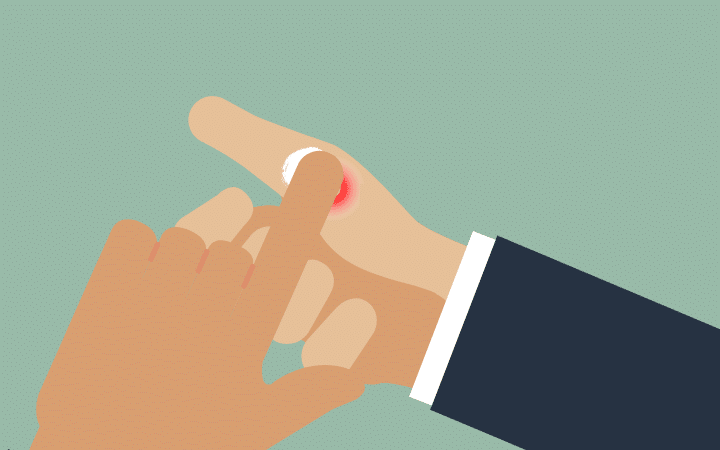
Between ice pack sessions, it’s recommended to apply a soothing ointment to relieve redness and itchiness. Try, for instance, a calamine lotion or a hydrocortisone cream if you have it at hand.
Natural Beekeeping Sting Remedies at Home
If you’re a healthy adult and do not experience any symptoms that might indicate an allergic reaction, you can easily deal with a bee sting at home.
There are many natural remedies that can take away the pain and the swelling quickly so you don’t have to rush to the drugstore to buy an expensive ointment.
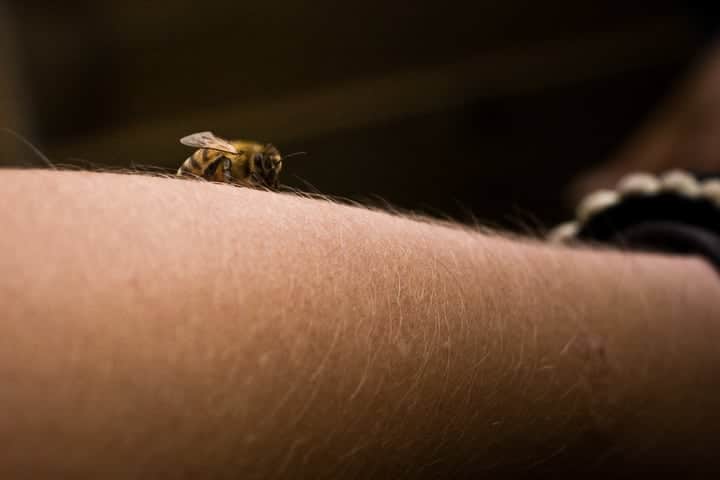
Here are a few items you might have around the house which you can use to treat a bee sting.
Honey
If you’re a beekeeper, you probably have plenty of honey. Apply a small amount of honey over the bee sting area and cover it with a band-aid.
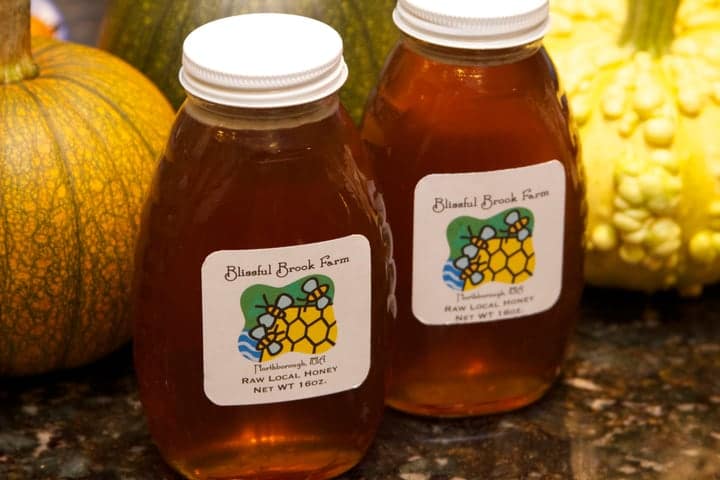
Let it work its magic for around an hour and then check the sting site.
Baking Soda
Baking soda is an almost universal remedy and it can be used to treat bee stings as well. Baking soda can reduce swelling, itchiness and pain while neutralizing the bee venom.
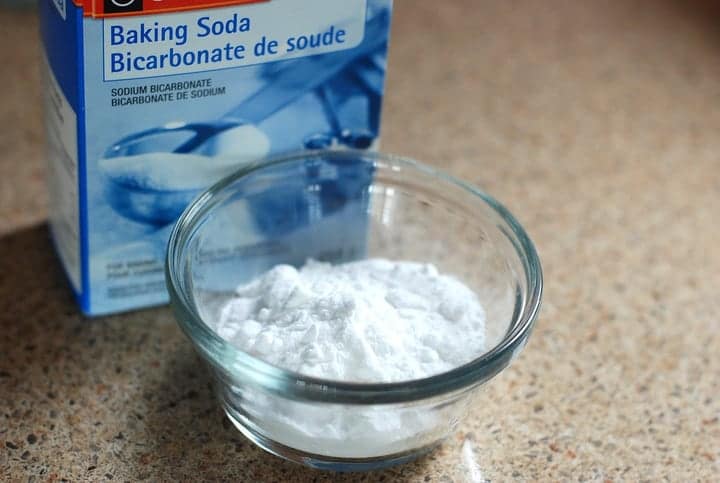
Prepare a paste with a little water and a pinch of baking soda and apply on the sting site. Cover the area with a loose bandage and leave it for at least 15 minutes.
Check to see if the swelling has gone down and repeat the process if necessary.
Apple Cider Vinegar
Many beekeepers use apple cider vinegar to neutralize bee venom. If you’ve been stung on the hand you can soak the affected area in a solution of diluted apple cider vinegar.
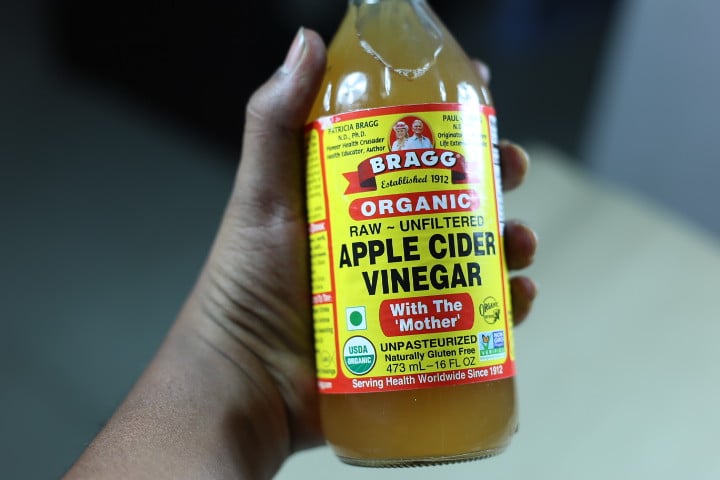
If that’s not possible, soak a clean piece of cloth in the solution and apply it over the affected area, leaving it for some 15 minutes.
Toothpaste
Some people say toothpaste is very efficient to treat bee stings, although the scientific explanation is not entirely clear.
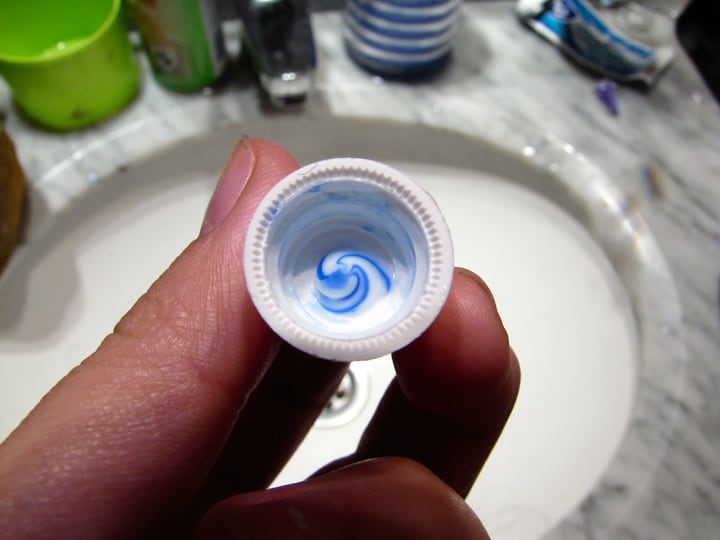
In any case, you can apply a bit of toothpaste over the bee sting site and leave it to dry.
Herbal Remedies
The gel of aloe vera is used to combat all sorts of skin problems. Apply a bit of gel over the affected area to soothe the skin and reduce the pain.
Witch hazel is a very popular remedy for many types of insect bites and stings, as it reduces swelling, pain, and itchiness.
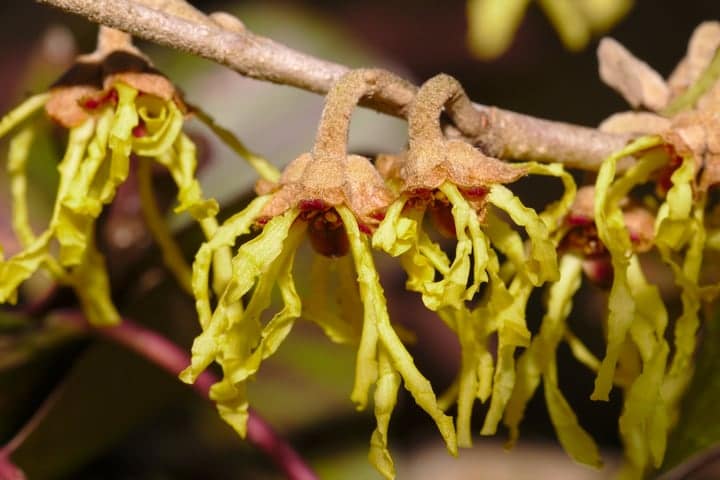
Good to know: Calendula-based creams have antiseptic properties and can treat skin irritations.
You can also try essential oils like tea tree oil or lavender oil, which have soothing properties and can help relieve swelling and itchiness.
Use a carrier oil to dilute the essential oils and apply a few drops of the mixture over the affected area.
The Best Beekeeping Sting Relief Kits
It would be odd to see regular folk carrying around bee sting relief kits, but if you’re a beekeeper you might want to be prepared.
Some beekeepers pride themselves on not having been stung in many years, while others say you cannot call yourself a beekeeper until you’ve been stung a couple of times.
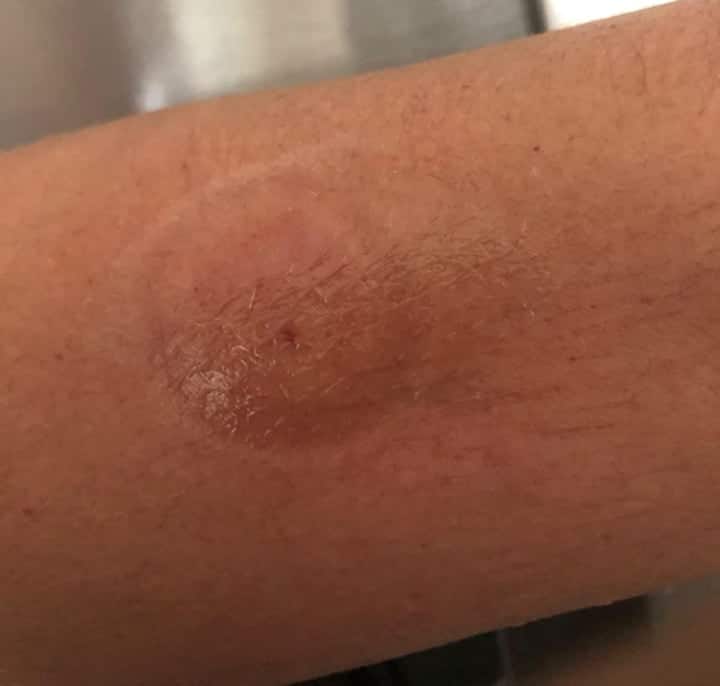
No matter where you stand on this issue, it’s best to be prepared. Here are a few first-aid kits that might help you.
Bee Sting Venom Remover
A bee sting venom remover is a simple suction device designed to remove the venom left behind by a bee sting. All you need to do is place the plastic tube over the sting site and pull up the handles on the sides of the device.
Hold it like that for 10 to 30 seconds and then release the suction by pushing the handles down.
It’s a reusable tool you can comfortably carry around in your pocket and is very effective for removing the saliva or venom injected by the bites of insects like mosquitoes and fire ants.
Exercise caution when using on areas with sensitive skin, like the face and the neck as the suction pump might leave a mark.
Bee Sting Swabs
There are various so-called sting-kill swabs on the market and they are used to treat a sting because they contain a powerful anesthetic which numbs the affected area and provides instant pain relief.
Usually sold in packs with 5 swabs, they can be carried in your pocket. Besides bee stings, these swabs can be used to treat wasps, mosquitoes, and jellyfish bites.
If you’re stung by a bee, remove the stinger, clean the area, and then apply the content of one swab on the sting site.
Bee Sting Wipes
A beekeeper should always have a pack of bee sting wipes close at hand, just in case. Obviously, you will have to first remove the stinger and the venom sack.
Bee sting wipes can be used to clean and disinfect the sting site, as they contain alcohol.
At the same time, these wipes will help reduce the pain as they contain lidocaine which works as an anesthetic.
Bee Sting Gels
You can find bee sting gels at any drugstore and they all have a specially designed formula to calm down skin irritations and reduce itchiness.
Before applying a bee sting gel, make sure to remove the stinger and wash the affected area thoroughly. Such gels are also a good remedy against mosquito bites.
Bee Sting Pads
Sting relief pads provide relief in case of bees, mosquitoes, and other insect bites. They are very good to carry around when you work with bees, but also when you go on a hike or in an area where you might get stung by nasty insects.
These pads are wrapped individually and they contain an antiseptic to disinfect the sting site, as well as an anesthetic to relieve pain.
Some pads also have menthol to cool down the area affected by swelling.
Bee Sting Commonly Asked Questions
Whether you’re a novice beekeeper or just a regular person concerned about a close encounter with a bee, here are a few of the most frequent questions people have about bee stings and how to deal with them.
What to do if you get stung by a bee?
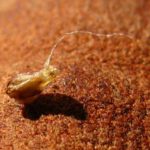
The most important thing is don’t panic, especially if you’re a beekeeper and your frenzied movements might make the other bees feel threatened. Get away from the bees before dealing with the bee sting.
Remove the stinger as quickly as possible, by scraping it with the edge of a credit card, your fingernail, or some other tool. Don’t pinch the stinger as this will inject more venom into your body.
Once you’ve removed the stinger, wash the sting site with water and soap, apply a pack of ice to reduce the swelling then rub some soothing ointment over the affected area.
If you notice any signs that might indicate an allergic reaction, call for help or call 911 as this is a life-threatening situation. If you know you’re allergic to bees, always carry an Epi-pen with you and use it as soon as you get stung.
How long does a bee sting last?
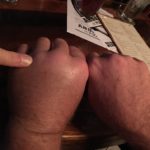
If you only have a mild reaction to the bee sting, most of the symptoms, such as redness, swelling, or itchiness will probably resolve on their own in a few hours or by the next day at the latest.
However, if you have a moderate reaction there will be significant swelling of the area surrounding the bee sting site. Take an antihistamine drug to alleviate the symptoms and apply a pack of ice over the sting site to reduce swelling and venom absorption.
You can use home remedies to calm the itchiness and skin irritation, but it will still be a few days before the symptoms disappear. Typically, a moderate reaction resolves within 5-10 days.
When should I be concerned about a bee sting?
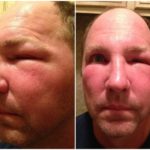
If you notice symptoms of an allergic reaction you should seek medical help immediately as it can lead to anaphylactic shock which can be lethal. The most serious symptoms are trouble breathing and swelling of the face, throat, or tongue.
Avoid being stung anywhere on the face or neck by donning protective gear when you’re around bees. Use an Epi-pen if you have one and call 911 as this is a medical emergency that requires immediate attention.
If you’ve been stung by many bees, you’re at risk of developing a toxic reaction even if you’re not allergic to bees, as the venom accumulates in your system. Signs indicating a toxic reaction include fever, nausea, vomiting, and convulsions.
This is not life-threatening for a healthy adult, but children or older people with heart or respiratory problems should seek medical help right away.
How painful is a bee sting?

A bee sting causes a sharp throbbing pain which is not caused by the stinger itself but by the venom injected into the body.
A honeybee sting was ranked as a 2 on the 0-4 Schmidt Sting Pain Index. It’s a moderate pain caused mainly by a chemical compound called melittin, which triggers pain receptors.
The pain caused by a bee sting varies with the part of the body affected. Stings to the skull, toes, and upper arms are the least painful, while those to the lips or nostrils cause the most excruciating pain.
No Bees, No Honey, No Work, No Money
That’s a famous proverb, at least among beekeepers and it kinda says it all. If you want the honey you’ll have to learn how to behave around bees.
If you act calm and confident, you won’t have much of a problem with bee stings. But you do have to realize that such incidents are inevitable in this line of work.
Most people have nothing to fear from a bee sting, as the pain is only temporary and you can deal with the symptoms easily using a variety of homemade or commercial remedies.
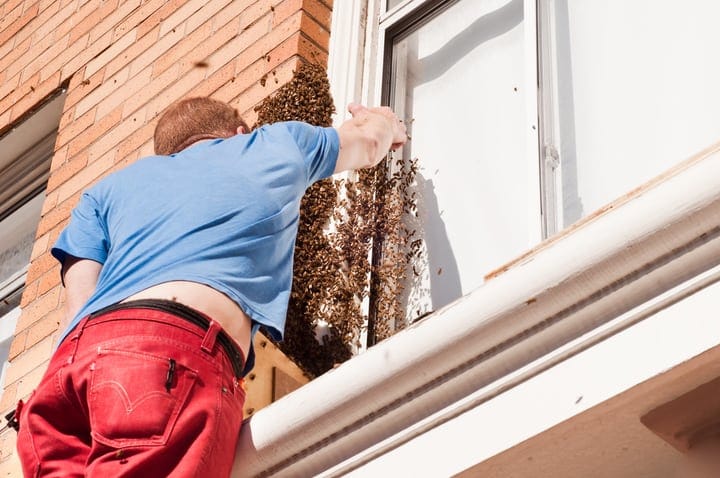
And, as they say, the first time is the hardest. Afterward, you will be able to handle a bee sting like a pro.
If your beekeeping, you can also get a beekeeper’s suit. Just make sure you’re not allergic to bee venom. If you have several allergies, it might be a good idea to get yourself tested before taking up beekeeping!
Have you ever been stung by a bee? Was it painful? Why not share with us your experience?

Leave a Reply